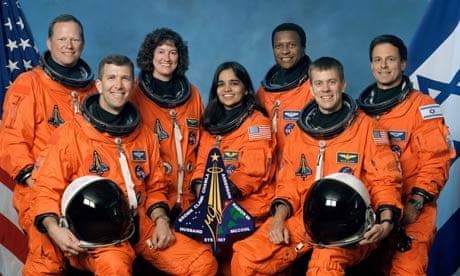Nasa managers discussed their obligation to inform the Columbia space shuttle crew of damage to the craft and the risks of returning it to Earth just days before it blew apart over Texas in 2003, a former project leader has revealed.
Speaking candidly to mark the 10th anniversary of the disaster that almost ended the agency's manned spaceflight programme, former shuttle project manager Wayne Hale revealed the depths of the moral debate that took place in Houston after the orbiter was struck by falling insulation foam on its launch from Florida 16 days earlier.
Hale wrote on his blog that he was told by Jon Harpold, then Nasa's director of mission operations: "You know, there is nothing we can do about damage to the thermal protection system. If it has been damaged it's probably better not to know. I think the crew would rather not know.
"Don't you think it would be better for them to have a happy successful flight and die unexpectedly during entry than to stay on orbit, knowing that there was nothing to be done, until the air ran out?"
At the time, Hale stressed, Harpold's words were purely hypothetical because the space agency's engineers were working on what he called "the wrong problem". They were looking at whether the briefcase-sized piece of foam, which knocked a hole in the leading edge of the orbiter's left wing, had instead damaged the softer thermal protection tiles on the wing's underside.
After showing the astronauts in orbit a video of the foam strike and discussing with them what they thought they knew, mission managers concluded that it was a non-issue and posed no threat to the crew's safe return.
They were proved wrong when hot gases seeped into the wing as Columbia attempted re-entry to Earth's atmosphere and caused the 17,5000mph explosion that sent chunks of the spacecraft raining down over eastern Texas.
Although the circumstances of the tragedy have been well documented, and Hale insists there was "never any debate about what to tell the crew", his revelation brings new insight to the mindset of some Nasa employees at the time.
The agency was heavily criticised by the report of the Columbia accident investigation board, published six months after the explosion, for "a culture of complacency" that led to the cutting of corners and the legitimate concerns of low-level employees being ignored. It was established that junior engineers had asked eight times for military satellite images to be studied to determine damage to the shuttle but were rebuffed by superiors.
Hale, now retired from Nasa after serving as flight director for 40 of the shuttle programme's 135 missions, said he did not agree with his manager's assessment that nothing could have been done for the astronauts.
"We would have pulled out all the stops. There would have been no stone left unturned. We would have had the entire nation working on it," he said, even though he realised such efforts would probably have been futile.
On his personal blog, he writes: "If there were some magical way to find out Columbia's status, a week after launch it was too late. The best case scenario, which had virtually no chance of succeeding, would only have worked if action had been taken on the second or third day of the flight; by the sixth day it was too late."
The three surviving shuttles, Endeavour, Discovery and Atlantis, were grounded for two and a half years after the disaster. For every mission after their 2005 return to flight until the fleet's eventual retirement in 2011, Nasa always kept another orbiter in an advanced state of readiness for a launch-on-need rescue mission.
The seven astronauts who died aboard Columbia were honoured Friday morning at a ceremony at Florida's Kennedy Space Center, attended by mission commander Rick Husband's widow Evelyn and family members of the other victims.
Nasa officials also paid tribute to the seven shuttle astronauts who perished in the 1986 Challenger disaster and the three killed in the 1967 Apollo 1 launchpad fire, and acknowledged the agency's failings a decade ago.
"The accident wasn't caused by a single event or a single person but by a series of technical and cultural missteps stemming all the way back to the first shuttle launch in 1981," said Bill Gerstenmaier, associate administrator for human exploration and operations.
"We continued to lose foam on many missions and this reinforced the idea that all was well. We did not stay hungry and we didn't deeply analyse the implications of foam being released at precisely the wrong moment.
"We need to stay vigilant and recognise that even the smallest potential flaw can become a big problem. Even small problems can serve as major failures."

Comments (…)
Sign in or create your Guardian account to join the discussion